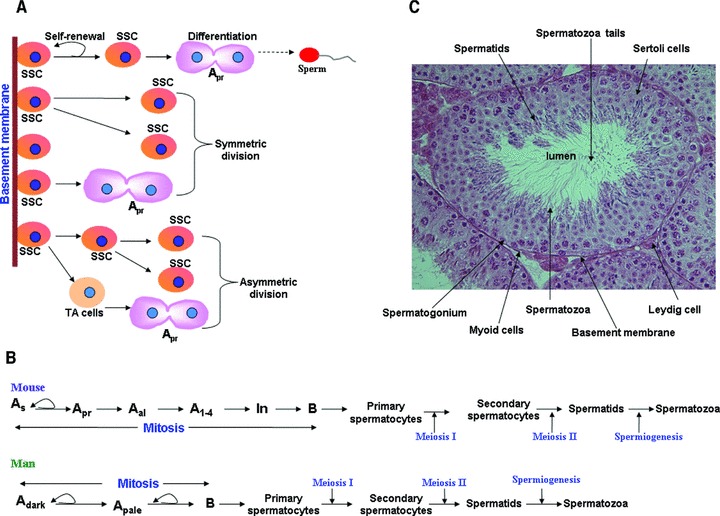Fig 1.

Cellular events in mouse and human spermatogenesis. (A) Spermatogenesis starts with a small number of SSCs, which reside at the base of seminiferous tubules of the testes, which undergo self-renewal, proliferation and differentiation to produce sperm. A single SSC by self-renewing division can produce two stem cells and by asymmetric division they can produce one stem and one differentiating cells or undergo a symmetric cell division to produce two differentiating cells. (B). Schematic diagram showing stages of spermatogenesis in mouse and men. (C). Haematoxylin and eosin staining of mouse testis illustrates the typical structure of the testis showing the seminiferous tubules containing the germ cells and Sertoli cells. SSC: spermatogonial stem cells; TA: trans-amplifying cells; As: Asingle; Apr: Apaired; Aal: Aaligned; In: intermediate spermatogonia.
